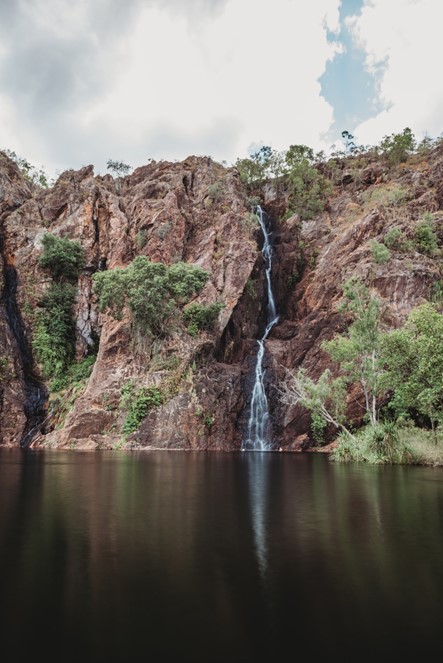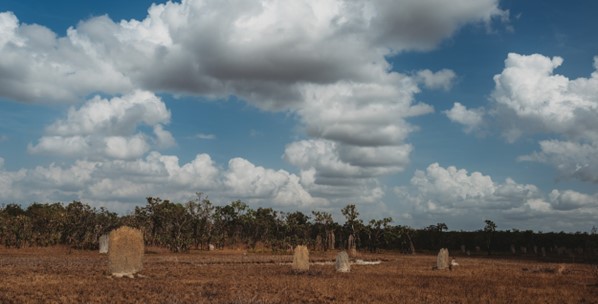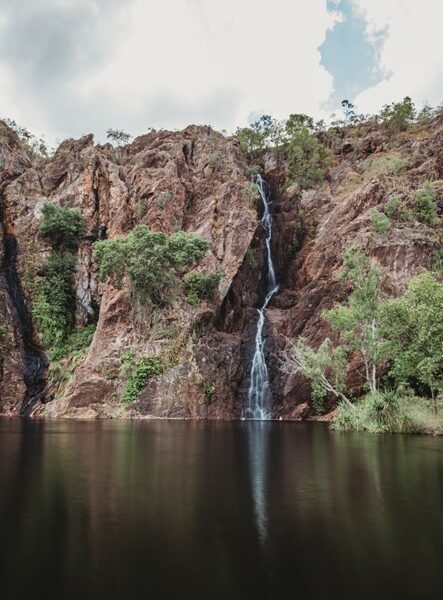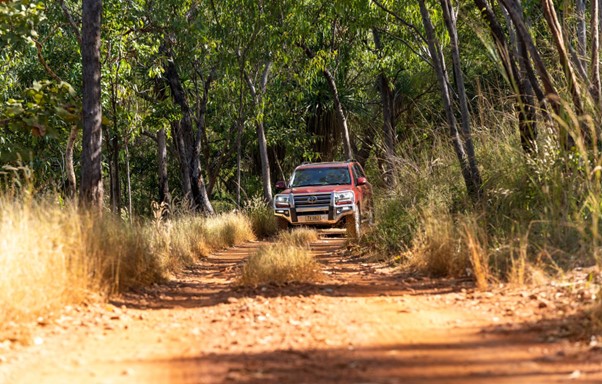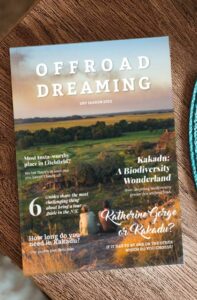1 Day Private Tour – Litchfield National Park
This Top End Experience will immerse you in Australia’s spectacular North and the magnificent Litchfield National Park. On this relaxing full day guided tour, you will swim in the fresh cool plunge pools and flowing waterways of Litchfield’s iconic waterfalls, visit scenic lookouts, bushwalk through monsoon rain forest and explore the endemic magnetic and majestic cathedral termite mounds. As we travel through the historical and geographical landmark locations, Offroad Dreaming share their knowledge of combined decades of experience in the area and delve into the stories and the natural wonders of the region. You will witness the uniqueness of our tropical ecosystems and hear how we have worked with the land and the elements in the Northern Territory for centuries. This full day shares with you some of the unique Territory experiences you can only find in Australia’s Top End.
-
Destination
1 Day Private Tour of Litchfield National Park
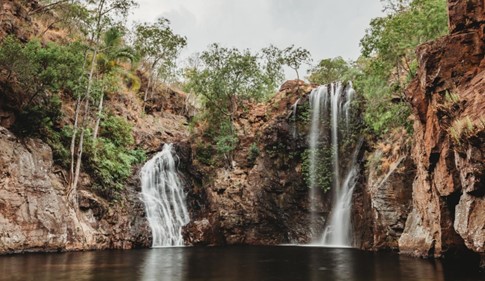 Leaving the city behind we make our way south towards Batchelor and Litchfield National Park. The township of Batchelor sits just to the east of the park and is commonly known as the Gateway to Litchfield. Originally a mining town, Batchelor played a significant role in the pioneering history of the Top End and during the Second World War. We continue to travel on and enter Litchfield National Park, stopping by the impressive Cathedral and Magnetic Termite Mounds. Here we can get up close with the mound structures and hear about the significant role termites play within the unique tropical ecosystem of the Top End.
Heading further into the Park we travel up onto the Table Top Range and visit Florence Falls and Buley Rockhole where you will have the option to swim in their adjacent fresh, cool, plunge pools and walk along the Shady Creek walk through the monsoon forest. The scenic viewing platform high above Florence Falls provides great photo opportunities of the panoramic views of falls and the waterhole below, while at Buley Rockhole you can sit, relax and let the water flow past you, while absorbing the scenic bush surrounds.
After a freshly prepared picnic lunch, a short drive along the range takes us to the parking area of Tolmer Falls. Situated on the Western edge of the Table Top Range, the walking path to Tolmer Falls provides views overlooking the lowlands landscapes for miles.
Next, we travel down the range to Wangi Falls. Here you will see the water from the twin falls cascade over the rock escarpment into the large pool below. There are various walking tracks, including a loop walk that takes you up and over the falls, or a less strenuous walk through the monsoon forest to a treetop viewing platform.
After taking in the views and cooling off in the crystal clear plunge pool (seasonal restrictions apply), we start to make our way back towards the Tropical City of Darwin using one of the lesser-travelled roads, returning early in the evening.
Leaving the city behind we make our way south towards Batchelor and Litchfield National Park. The township of Batchelor sits just to the east of the park and is commonly known as the Gateway to Litchfield. Originally a mining town, Batchelor played a significant role in the pioneering history of the Top End and during the Second World War. We continue to travel on and enter Litchfield National Park, stopping by the impressive Cathedral and Magnetic Termite Mounds. Here we can get up close with the mound structures and hear about the significant role termites play within the unique tropical ecosystem of the Top End.
Heading further into the Park we travel up onto the Table Top Range and visit Florence Falls and Buley Rockhole where you will have the option to swim in their adjacent fresh, cool, plunge pools and walk along the Shady Creek walk through the monsoon forest. The scenic viewing platform high above Florence Falls provides great photo opportunities of the panoramic views of falls and the waterhole below, while at Buley Rockhole you can sit, relax and let the water flow past you, while absorbing the scenic bush surrounds.
After a freshly prepared picnic lunch, a short drive along the range takes us to the parking area of Tolmer Falls. Situated on the Western edge of the Table Top Range, the walking path to Tolmer Falls provides views overlooking the lowlands landscapes for miles.
Next, we travel down the range to Wangi Falls. Here you will see the water from the twin falls cascade over the rock escarpment into the large pool below. There are various walking tracks, including a loop walk that takes you up and over the falls, or a less strenuous walk through the monsoon forest to a treetop viewing platform.
After taking in the views and cooling off in the crystal clear plunge pool (seasonal restrictions apply), we start to make our way back towards the Tropical City of Darwin using one of the lesser-travelled roads, returning early in the evening. 

